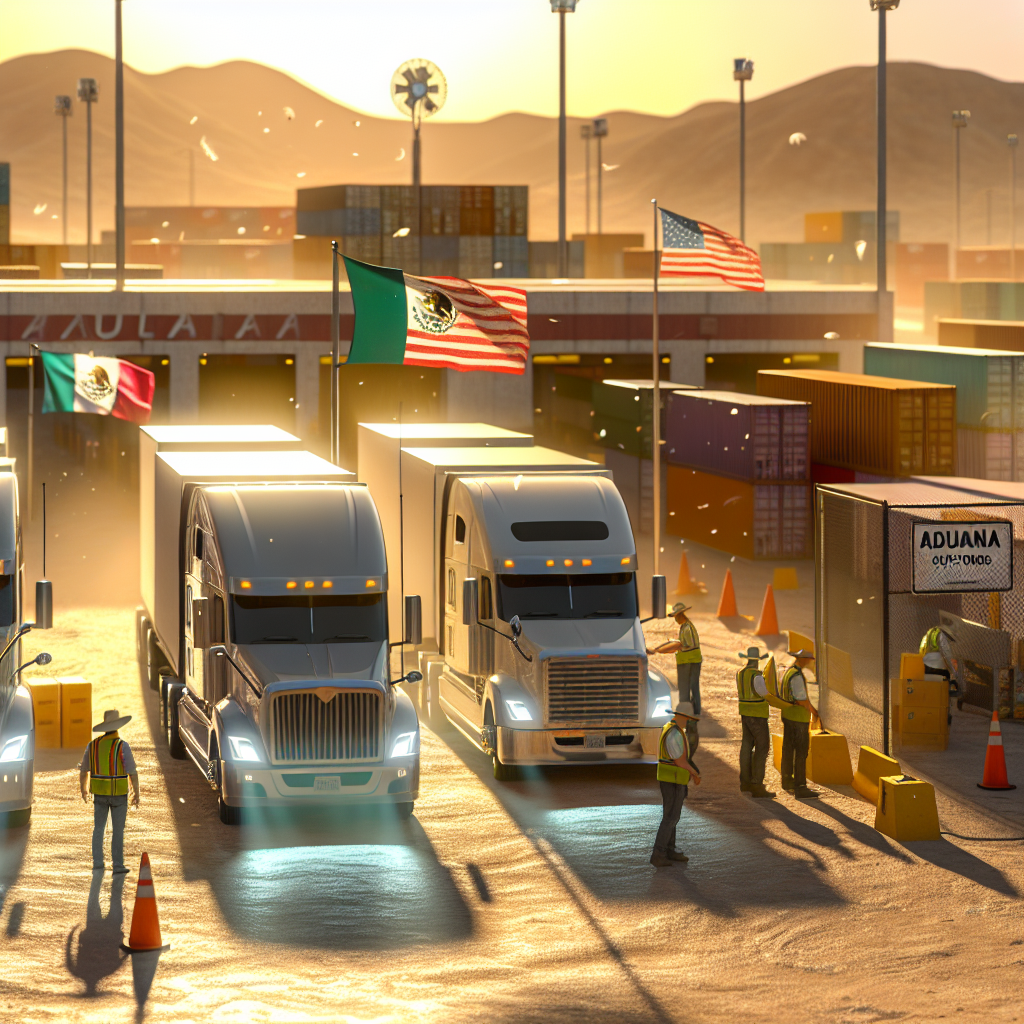Tariffs are no longer an abstract policy risk on the U.S.–Mexico lane; they’re a forcing function. Industry sources in Mexico’s borderlands say the new duty landscape is pushing manufacturers to rewire supply chains around North American content, dual‑sourcing and multi‑country assembly — shifts that will favor cross‑border trucking networks built for faster cycles and tighter compliance.
The auto corridor offers a clear example. India’s Motherson Group just committed US$50 million to expand its Tlaxcala plant to support Audi’s Q5 program — new paint capacity and added molding that keep more value‑add in Mexico instead of Asia. For carriers, that means more northbound plastics and parts, more southbound machinery, and steadier milk‑runs between Puebla–Tlaxcala suppliers and border gateways.
At the same time, the broader import cadence into U.S. ports is cooling into the holidays after months of front‑loading to get ahead of tariff actions. The National Retail Federation’s latest Global Port Tracker (released November 7) expects November–December TEUs to slow sharply year over year, a sign that retailers already pulled forward what they could. For truckers, that typically translates into choppier, shorter‑notice replenishment and a higher premium on capacity that can pivot between port drayage and cross‑border lanes.
Power constraints — long a gating factor for factory commitments — are also drawing fresh capital. Canadian solar firm Solfium announced a US$10 million project in Querétaro on November 7. Beyond the kilowatts, that kind of distributed generation build‑out creates immediate trucking demand (racks, panels, electrical cabinets) and, longer‑term, a more reliable backbone for plants localizing content to hit USMCA thresholds.
One near‑term wildcard: airfreight. After last week’s fatal MD‑11 crash in Louisville, UPS and FedEx temporarily grounded their MD‑11 fleets pending inspections. Any squeeze on long‑haul air capacity tends to spill into time‑definite trucking and cross‑border expedited moves — especially for high‑value automotive components now being regionalized. Keep an eye on El Paso and Laredo for short‑fuse surge freight while carriers rebalance networks.
Signals inside trucking’s own data are also turning. A FreightWaves analysis published November 8 flagged that shippers began trimming inventories in October, a pivot back toward just‑in‑time behavior that usually boosts replenishment runs and favors fast border turns over slow ocean‑to‑warehouse cycles. For Mexican nearshore suppliers, that can mean more frequent, smaller lots moving by truck and a higher premium on predictable customs clearance.
What it means on the ground: brokers and carriers working the U.S.–Mexico lane should double down on (1) rules‑of‑origin fluency to help shippers maximize tariff offsets; (2) cycle‑time reliability at key crossings (Laredo, El Paso, Pharr) to support smaller, more frequent shipments; and (3) modal agility, with contingency for air‑to‑truck diversions. The tariff era is rewarding operators who can prove content, compress lead times and keep freight moving — not just the cheapest line‑haul.
Sources: FreightWaves, MEXICONOW, National Retail Federation, The Guardian, Business Insider
This article was prepared exclusively for TruckStopInsider.com. Republishing is permitted only with proper credit and a link back to the original source.




